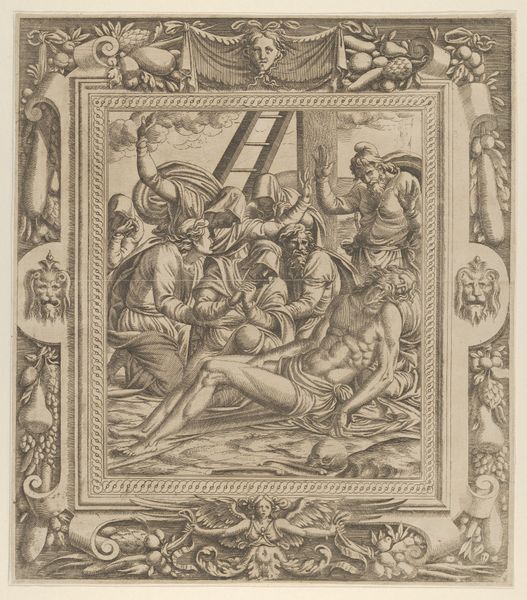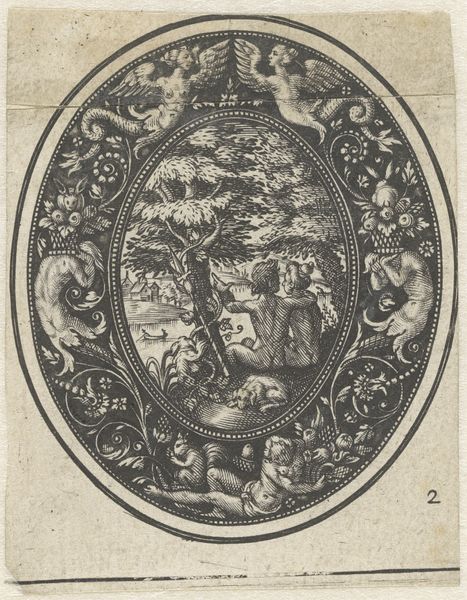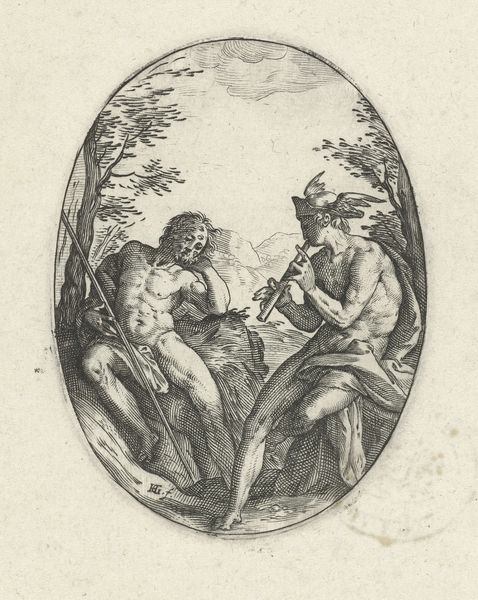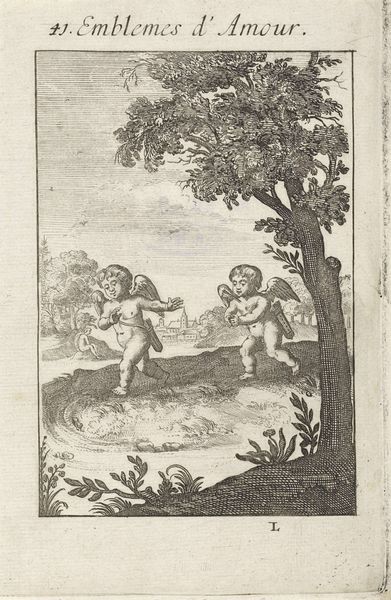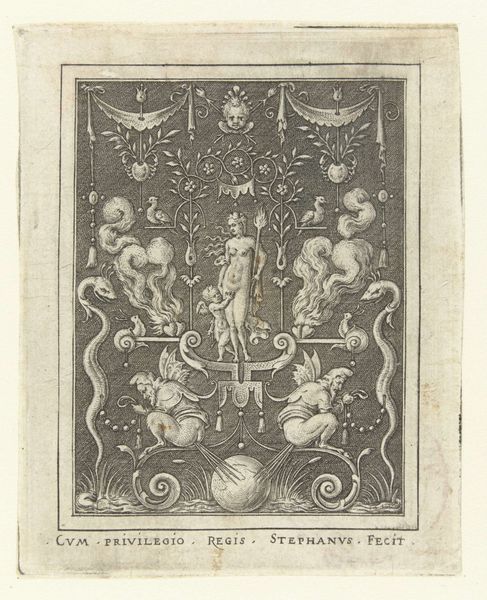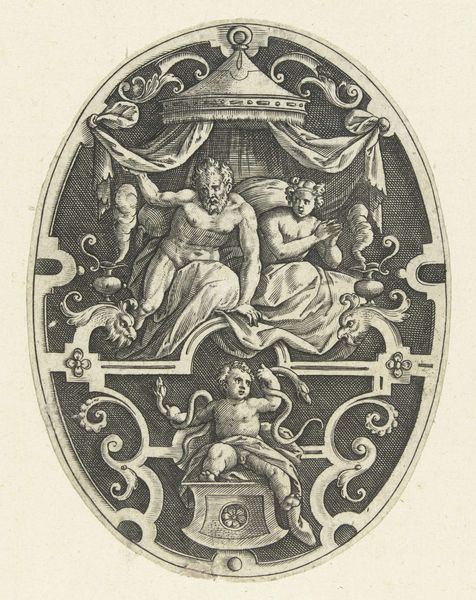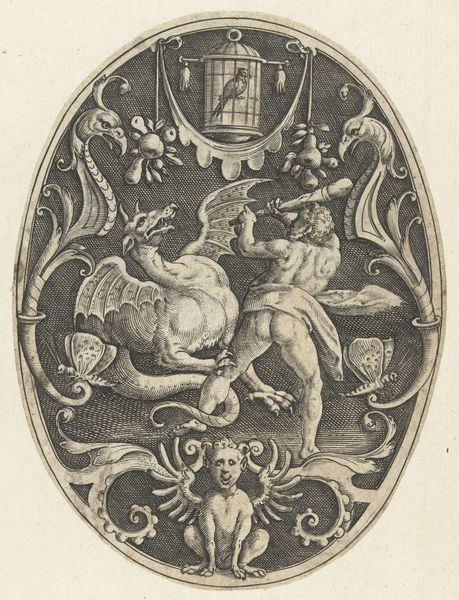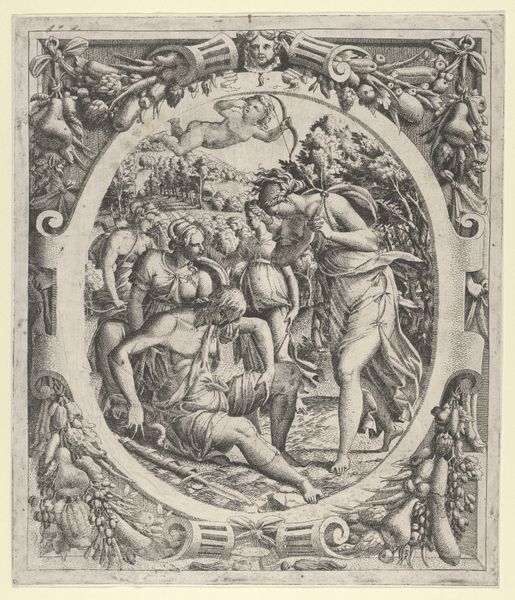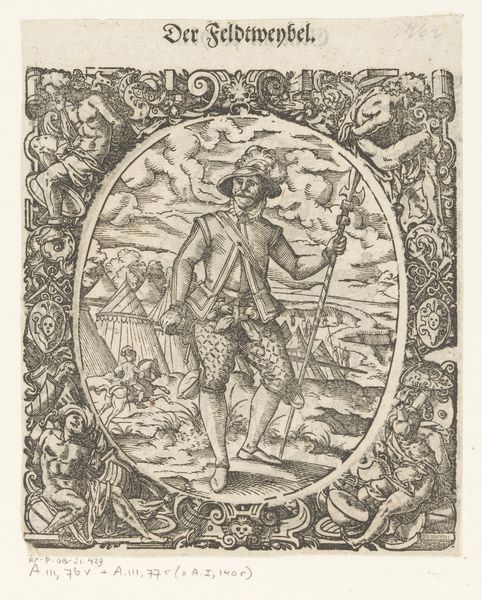
print, engraving
# print
#
etching
#
mannerism
#
figuration
#
history-painting
#
italian-renaissance
#
nude
#
engraving
Copyright: Rijks Museum: Open Domain
Curator: Ah, this tiny arena of cherubic conflict. There’s something unsettlingly precious about it. Editor: Indeed! This engraving, dating from somewhere between 1500 and 1600, is called "Medaillon met twee kinderen, gewapend met knotsen" or "Medallion with two children armed with clubs". It is made by an artist only known as Monogrammist HO. The Italian Renaissance influence is apparent, would you not agree? Curator: Italian Renaissance with a wink, perhaps. Mannerism loved its grotesques, and these belligerent babies feel a little like that, inflated and itching for a brawl. Like slightly terrifying cupids. Editor: Well, in Mannerism, beauty is often found in that very exaggeration and artifice. Think about the historical context: The Italian Renaissance was steeped in classical mythology, often depicting children as playful putti. However, socio-political unrest colored this view by the 16th century. Curator: Which comes through, here, right? This isn’t just playtime. It’s a fight for position. A bit… cutthroat, even, considering they are nearly newborns. Is it commentary or observation, I wonder? A reflection of social strife as seen through… infant eyes? Editor: Precisely. These weren't naive times. Wars, religious conflict… Images of conflict and power struggles, filtered through the safe remove of classical allusion, spoke volumes. This print may well have functioned as a satirical reflection of power dynamics. Curator: Makes you wonder about the little details, doesn't it? That vase behind them, the way the acanthus leaves frame their tiny rage. It is domestic but volatile, almost claustrophobic. Like bottled aggression, you could almost explode from that. Editor: Or a pressure valve; using classical references and the seemingly harmless imagery of chubby children to subtly critique the grown-up world. In essence, these seemingly decorative prints played a vital role in expressing opinions, fueling debates, and reflecting anxieties. Curator: Gives new meaning to "child's play", eh? Well, it reminds me not to underestimate what even the tiniest, sweetest-looking image can say, it’s easy to see an old thing as simply decorative, until one scratches beneath its veneer to reveal so much history of life, thought and purpose. Editor: Quite. And it showcases how even art can be a silent protest. Let us now continue.
Comments
No comments
Be the first to comment and join the conversation on the ultimate creative platform.
